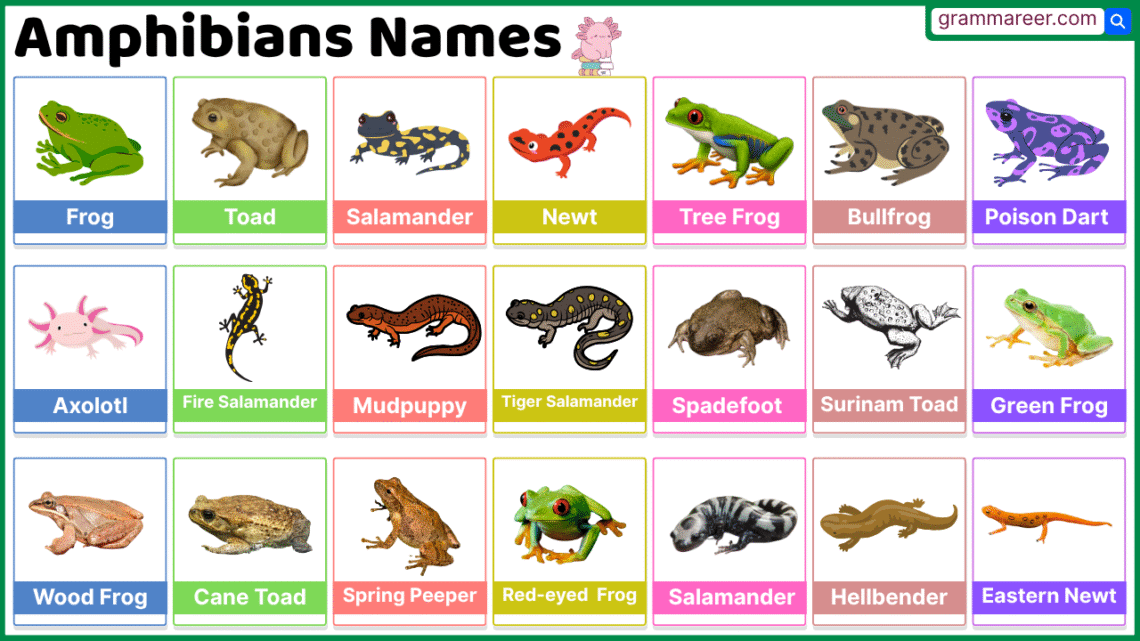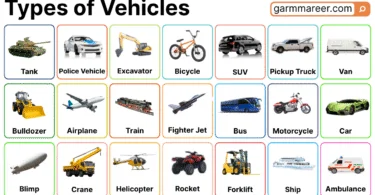Learning amphibians names is useful for understanding life science, habitats, and animal classification. This blog post helps learners identify amphibians in English using categorized vocabulary. From frogs to newts, each group includes many species that can help boost animal-related vocabulary. It is especially helpful for beginners and ESL learners who want to recognize or describe animals in English. Pictures will also help make learning more memorable and clearer.
Table of Contents
Amphibians Names in English with Infographic
Amphibians are cold-blooded animals that live both in water and on land. Below is a categorized list of amphibians names to help improve your animal vocabulary in English.
Red-eyed Tree Frog: This frog is known for its bright red eyes and green body, which help it hide from predators.
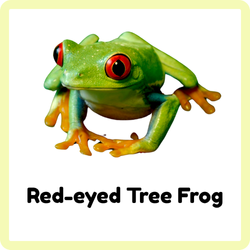
Bullfrog: Bullfrogs are very large frogs that make deep loud calls, and they usually live near ponds or lakes.
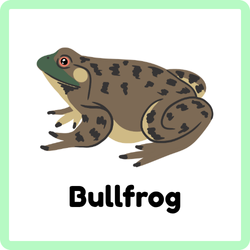
Cane Toad: Cane toads have toxic skin that keeps them safe from predators, and they can grow very big.
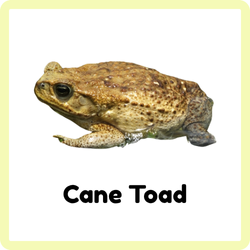
Surinam Toad: This unusual toad carries eggs in the skin on its back, where baby toads safely develop.
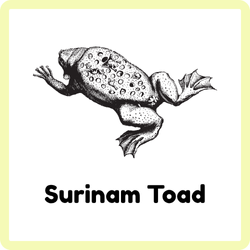
Green Frog: Green frogs are often found near water, and their calls sound like a twang of a banjo string.

Toad: Toads usually have rough skin, short legs, and they spend more time on land compared to regular frogs.
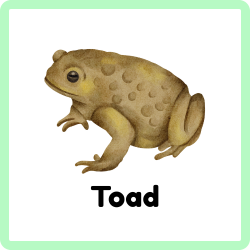
Poison Dart Frog: These small colorful frogs are dangerous because their skin has poison strong enough to harm predators.
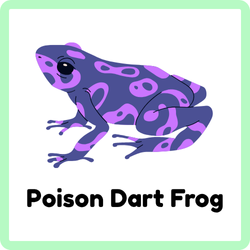
Spring Peeper: Spring peepers are tiny frogs with a loud call, and they are often heard in early spring evenings.
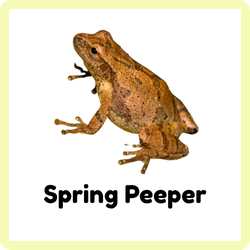
Axolotl: The axolotl is a salamander that stays in water its whole life and never develops into an adult.
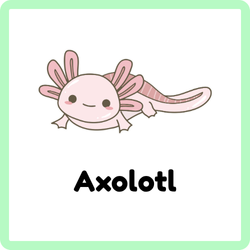
Marbled Salamander: This salamander has black skin with white or gray bands, and it is active during cooler and rainy nights.
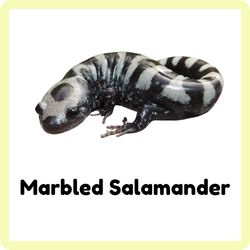
Mudpuppy: Mudpuppies are aquatic salamanders that keep their gills for life and make soft barking sounds when disturbed.
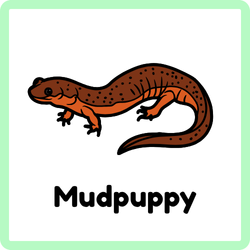
Salamander: Salamanders look like lizards but have soft moist skin, and they are usually found in damp and dark places.
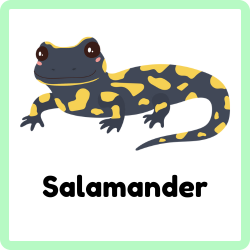
Newt: Newts are a type of salamander with rougher skin, and they can live both in water and on land.
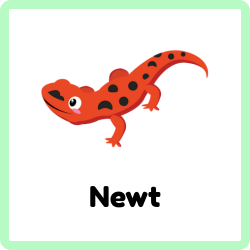
Frog: Frogs are amphibians with smooth skin and long legs, and they are great jumpers that live near water.
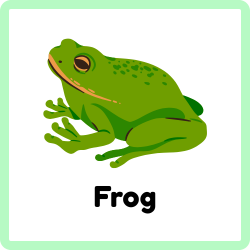
Wood Frog: Wood frogs can survive freezing temperatures by stopping their body and heart for the winter, then thawing safely.
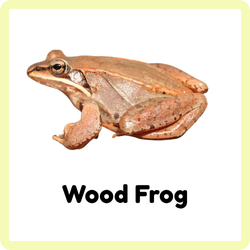
Fire Salamander: This salamander is black with yellow spots, and it can release toxins to defend itself from predators.

Tree Frog: Tree frogs have sticky toe pads that help them climb trees and stay on leaves without slipping.
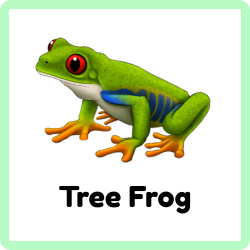
Spadefoot Toad: These toads dig into soil with spade-like feet, and they stay underground during hot or dry weather.
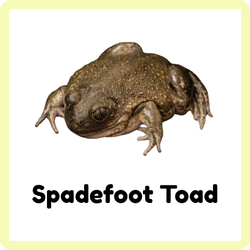
Hellbender: The hellbender is a very large salamander that lives in clean rivers and breathes through its loose skin.
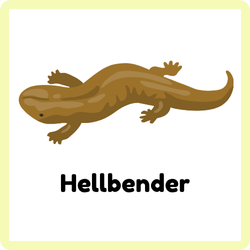
Tiger Salamander: Tiger salamanders are big with yellow or green spots, and they are one of the most common salamanders.
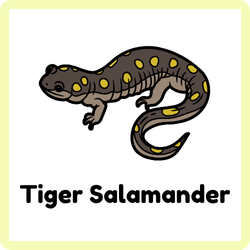
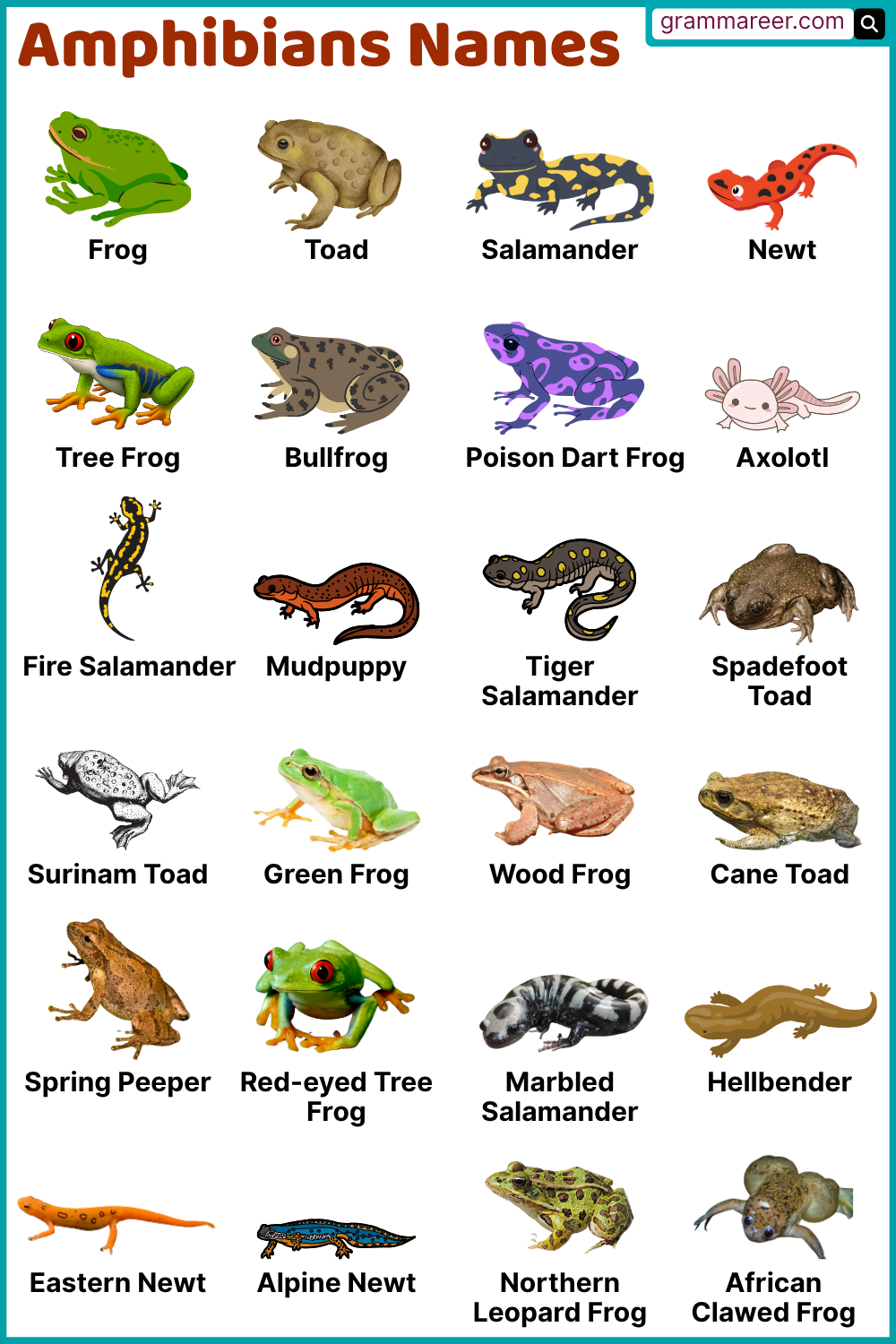
Types of Amphibians
Amphibians are divided into major groups based on their physical traits. Below is the list of major types of amphibians recognized in biology.
- Frogs
- Toads
- Salamanders
- Newts
- Caecilians
Each type includes many species and has different habitat needs and appearances.
Frog Species Names
Frogs are the most recognized amphibians. Below is a list of frog species names to expand your vocabulary.
- American Bullfrog
- Tree Frog
- Glass Frog
- Red-eyed Tree Frog
- Dart Frog
- Leopard Frog
- Wood Frog
- African Clawed Frog
- Goliath Frog
- Tomato Frog
- Gray Tree Frog
- Green Frog
- Amazon Milk Frog
- Spring Peeper
- Marsh Frog
- Mink Frog
- Pickerel Frog
- Ornate Horned Frog
Toad Species Names
Toads are a subgroup of frogs with drier skin and warty textures. Below is a list of toad species names for vocabulary building.
- Common Toad
- American Toad
- Fowler’s Toad
- Natterjack Toad
- Cane Toad
- Colorado River Toad
- Spadefoot Toad
- Fire-Bellied Toad
- Yosemite Toad
- Great Plains Toad
- Western Toad
- Southern Toad
- Oak Toad
Salamander Species Names
Salamanders are amphibians with tails and smooth moist skin. Below is a list of salamander species names used in English vocabulary.
- Tiger Salamander
- Fire Salamander
- Spotted Salamander
- Slimy Salamander
- Marbled Salamander
- Red Salamander
- Blue-spotted Salamander
- Mole Salamander
- Lungless Salamander
- California Giant Salamander
- Jefferson Salamander
- Mudpuppy
Newt Species
Newts are small salamanders with both aquatic and terrestrial life stages. Below is a list of newt species to improve amphibian-related vocabulary.
- Eastern Newt
- Smooth Newt
- Alpine Newt
- Iberian Ribbed Newt
- Fire Belly Newt
- Great Crested Newt
- Japanese Fire Belly Newt
- California Newt
- Taricha Newt
- Triturus Newt
Common Amphibians Names List Around the World
Many amphibians are widespread across continents. Below is a list of common amphibians that are known globally and help learners understand standard vocabulary in animal studies.
- American Bullfrog
- Cane Toad
- Fire Salamander
- Eastern Newt
- Common Toad
- Tiger Salamander
- Tree Frog
- Axolotl
- Red-eyed Tree Frog
- Smooth Newt
- African Clawed Frog
- Alpine Newt
- Wood Frog
Amphibians Found in Rainforests
Rainforests are home to colorful and exotic amphibians. Below is a list of rainforest amphibians that students and learners should know in English.
- Poison Dart Frog
- Red-eyed Tree Frog
- Amazon Milk Frog
- Glass Frog
- Tiger-striped Leaf Frog
- Horned Frog
- Rain Frog
- Leaf-litter Toad
- Green-and-black Poison Frog
- Harlequin Toad
- Spotted Stream Frog
- Borneo Narrow-mouthed Frog
Aquatic Amphibians List
Some amphibians spend their entire lives in water. Below is a list of aquatic amphibians to build water-animal-related vocabulary.
- Axolotl
- African Clawed Frog
- Mudpuppy
- Olm
- Chinese Giant Salamander
- Siren
- Newt (juvenile stage)
- Eastern Hellbender
- Greater Siren
- Dwarf Siren
- Iberian Ribbed Newt
- Fire-bellied Newt
Amphibians That Live on Land
Not all amphibians need water all the time. Below is a list of land-dwelling amphibians commonly known for living more on land than water.
- Common Toad
- Tiger Salamander
- Fire Salamander
- Spotted Salamander
- Wood Frog
- Eastern Newt (adult stage)
- Marbled Salamander
- American Toad
- Rough-skinned Newt
- Spring Peeper
- Yosemite Toad
Endangered Amphibian Species
Some amphibians are at risk of extinction. Below is a list of endangered amphibians that are often studied for conservation efforts and environmental vocabulary.
- Axolotl
- Chinese Giant Salamander
- Golden Toad (extinct)
- Harlequin Frog
- Mountain Yellow-legged Frog
- Kihansi Spray Toad
- Titicaca Water Frog
- Baw Baw Frog
- Chile Darwin’s Frog
- Dusky Gopher Frog
- Hellbender
- California Tiger Salamander
- Olm
Amphibians with Unique Features
Some amphibians are known for their special characteristics. Below is a list of unique amphibians with interesting traits.
• Glass Frog: Transparent skin shows organs inside
• Axolotl: Regrows limbs and keeps gills
• Surinam Toad: Eggs develop on the mother’s back
• Olm: Blind amphibian that lives in caves
• Hellbender: One of the largest salamanders
• Fire Salamander: Bright colors warn of toxins
• Giant Salamander: Can grow up to 6 feet
• Pacman Frog: Wide mouth and strong bite
• African Clawed Frog: Has sharp claws for defense
• Caecilian: Legless and burrows underground
Amphibians Names with Habits and Foods
| Amphibian Name | Habit (Behavior/Lifestyle) | Food (Diet) |
|---|---|---|
| Frog | Active in water and on land; jumps to move | Insects, flies, worms |
| Toad | Lives on land; hides under rocks or leaves | Beetles, ants, spiders |
| Salamander | Prefers cool, moist places; often hides under logs | Slugs, insects, small worms |
| Newt | Lives in ponds and wetlands; swims using tail | Small invertebrates, insects, tadpoles |
| Tree Frog | Climbs trees; active at night | Moths, mosquitoes, small insects |
| Bullfrog | Loud croaker; lives near ponds or lakes | Fish, insects, other frogs |
| Caecilian | Lives underground; looks like a worm or snake | Earthworms, termites, small insects |
| Glass Frog | Found in rainforests; hides on leaves | Small insects, spiders |
| Poison Dart Frog | Active during the day; brightly colored | Ants, mites, fruit flies |
| Axolotl | Stays in water all life; regenerates limbs | Worms, small fish, larvae |
| Fire Salamander | Hides in forests; active at night | Insects, snails, small amphibians |
| Spadefoot Toad | Burrows underground; appears after rain | Crickets, grasshoppers, beetles |
| Tiger Salamander | Stays hidden in burrows; comes out during rain | Worms, insects, small frogs |
| African Clawed Frog | Fully aquatic; uses hind legs to swim | Insects, crustaceans, small fish |
| Ornate Horned Frog | Stays hidden; waits for prey to come | Insects, mice, small reptiles |
FAQs
The three main types of amphibians are frogs, salamanders, and caecilians. Each group has different traits and habitats.
Frogs usually have smooth, moist skin, while toads have drier, warty skin and live more on land.
Amphibians like the Common Toad, Fire Salamander, and Wood Frog spend most of their lives on land.
While many amphibians like the Axolotl and Golden Toad are endangered, many others are still common.
Amphibians have moist skin and live part of their life in water. Reptiles have dry, scaly skin and lay eggs on land.
You May Also Like

